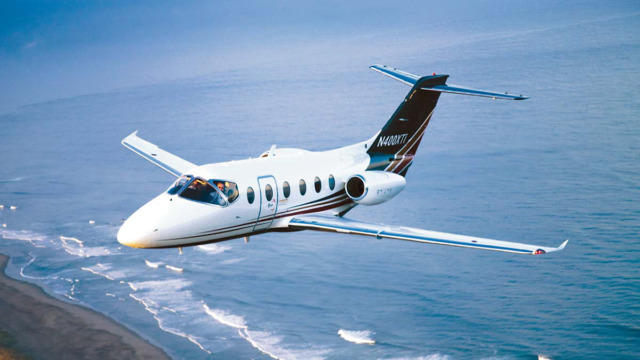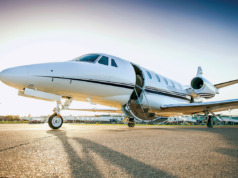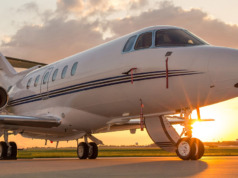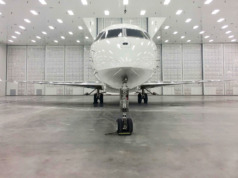
Many factors drive aircraft product improvements – better operating economics, better performance, and sometimes, even our better nature, as evidenced by lower exhaust emissions and the Sustainable Alternative Jet Fuel initiative. For 55 years of turbine aircraft progress, it’s been all three.
It began in 1964, when Beechcraft introduced the first King Air 90, a faster turboprop-powered, pressurized version of its piston engine Queen Air. That year, Grumman did the same – re-engining the turboprop G-I to create the first large cabin, intercontinental business jet: the G-II.
In 1973, Learjet launched the turbofan Learjet 35, an upgrade of the original turbojet 24/25 series, replacing the turbojet GE CJ610 engine with the Garrett (now Honeywell) TFE 731. Dassault Falcon Jet did so with the original Falcon 20, as did British Aerospace with the early Hawker 125. Gulfstream performed yet another transformation when it replaced the Rolls-Royce Spey engine on the G-III with the Tay to create the turbofan G-IV.
Original equipment manufacturers (OEMs) sought to offer owners newer and better versions of their existing product lines. While they continue to offer upgraded and improved versions of their current models, third-party engineering/manufacturing companies have been able to take such well designed and constructed airframes, and update them with technologically advanced engines, avionics, and refurbished interiors. By using existing reconditioned airframes, they’re able to offer them to owners like you at 40 to 50 percent below comparable new model prices.
One such remanufacturer modified and upgraded more than 500 small-cabin Citations with Williams engines, new wings, and avionics – upgrades since emulated by Textron Aviation on some newer Citation models. Canadian company Viking Air went from supporting the popular De Havilland Twin Otter series for Bombardier, to purchasing the manufacturing rights and upgrading the entire product line.
Nextant Aerospace has taken a slightly different approach: by selecting successful models from three market segments, it can offer options for upgraded aircraft to a wider variety of owners and users, rebuilt to the same standard under a single brand. Its customers either can bring their own aircraft to Nextant, or have it acquire one. Nextant then either rebuilds the aircraft completely (the “Turnkey” option) or modifies it with options selected by the client (“A La Carte”).
Its first venture in 2007 was to take the former Beechjet 400A/Hawker 400XP light jet and upgrade it with fuel-efficient Williams International FJ44 engines, Collins Pro Line 21 avionics, and better airframe, systems, and interior. The 400 began life in 1978 as the Mitsubishi MU-300 Diamond before Beechcraft acquired its program in 1985. The Nextant 400XTi version sports a 2000+ mile range, higher cruise speeds, and meets the FAA and ICAO Stage IV reduced noise standard.
Nextant followed that with a King Air 90 update, the G90XT, competing with Beechcraft’s own updated King Air 90, the C90GTx. In place of the Pratt & Whitney PT6-135A engine and Collins Pro Line Fusion avionics, the Nextant G90XT is equipped with GE Aviation H75-100 engines and Garmin avionics. Its winglets make the G90XT comparable to the Beechcraft C90GTx in range and cruise speed.
Nextant now offers an updated edition of Bombardier’s Challenger 604. The Canadian manufacturer replaced that popular model in 2006 with the 605 and then again in 2016 with the 650. With a projected range of more than 5,000 statute miles carrying four passengers, and maximum altitude of 45,000 feet, the 604XT compares very favorably with both OEM models. It features an upgraded Collins Pro Line Fusion avionics suite, new cabin design options, and aerodynamic enhancements.
For more than half a century, business turbine OEMs have designed and built durable airframes, updating and upgrading them as new technology allowed. That durability is what enables today’s remanufacturers to offer you with a third option to just buying “new” or “used.” BAA
Publisher of Business Aviation Advisor, has nearly 50 years in business aviation including executive positions at aircraft management/charter and ground services companies. He is a past director of the NATA and Corporate Angel Network.





